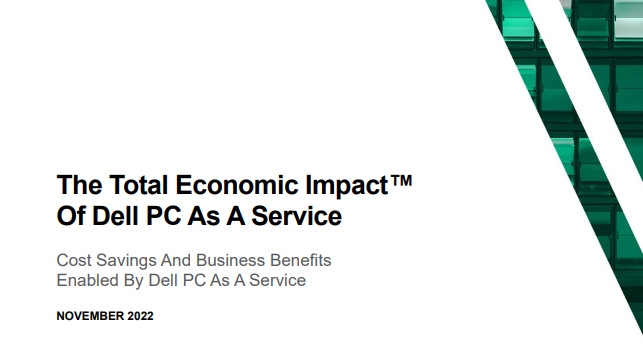Taking stock of cyber security in 2023: Challenges and opportunities
Despite macroeconomic conditions, cyber security spending continues to rise, presenting opportunities for channel partners


In contrast to the difficulties seen in some areas of the technology industry, the cybersecurity sector continues to grow.
Research from Canalys earlier this year predicted that global cyber security spending is expected to increase by 13% in 2023, with total spending reaching over $223 billion.
As such, it will remain “a key growth sector for channel partners” – an important point, given that “more than 90% of total cyber security product and services spending will go through channel partners in 2023.”

Anderson, a 15-year beteran of the IT channel, is vice president for EMEA channels at Exabeam. He's most recently spent time at Quest/One Identity Software, where he led global MSP, distribution and channel strategy. Before joining Quest Software, Anderson spent eight years at Ivanti, where he led the EMEA partner business through a period of significant growth for the company.
The driving factors behind these trends are well understood. The growing volume, sophistication, and success of cyber attacks are continuing to heap pressure on organizations that are largely or wholly dependent on their technology infrastructure to operate.
RELATED RESOURCE

The Total Economic Impact™ of Dell PC as a Service
a framework for you to evaluate the potential financial impact of Dell PCaaS on your organization
Add to that the complexity of modern tech strategies, and threat actors are seeing opportunities everywhere – and acting on them. The risks have become so acute that organizations have been forced to respond.
So, while the cyber security industry as a whole can retain a positive outlook, economic pressures are having an impact on corporate decision-making and investment priorities. The situation puts many organizations in a difficult position, according to Canalys.
“Organizations are already struggling to deal with current threat levels and cannot afford to cut back on spending as it will leave them even more vulnerable. Instead, they will need to work more closely with channel partners to make smarter investments.”
ChannelPro Newsletter
Stay up to date with the latest Channel industry news and analysis with our twice-weekly newsletter
With all of this in mind, where are we heading, and what other issues are likely to influence the industry agenda going forward during the remainder of 2023?
Narrowing margins
Organizations across the channel ecosystem are currently seeing product-related profit margins squeezed as customers revise their spending plans or drive a harder bargain. This trend is likely to continue as procurement teams keep a close eye on macroeconomic performance, the prospect of interest rate cuts, and a return to more healthy growth.
At the same time, many customers are increasing their dependency on SaaS applications and the adoption of cloud-based infrastructure and services. This trend presents a challenge for providers of complex enterprise solutions such as SIEM, where channel partners play a major role in the sales process despite low margins being driven by customers and alternative routes to market like Cloud Marketplaces.
In these circumstances, it is incumbent on vendors to ensure their partners can maximize revenue and value as part of a mutually beneficial relationship.
Security technology integration is becoming key
There’s no doubt that the cyber security landscape is becoming more complex and challenging all the time. In practical terms, many organizations find it increasingly difficult to understand and act on the sheer volume of alerts their systems create.
Without better clarity, however, fast and accurate decision-making becomes a real challenge, especially when a security incident is developing.
Part of the problem here is that the typical SOC operates a range of disparate monitoring tools, many with very specific roles and operating without effective integration with other systems. As a result, open vendor technologies are growing in popularity as organizations seek to deliver the interoperability that can close security blind spots and help drive effective decision-making.
Dealing with the data deluge
Given the reach and capabilities of modern technologies, security teams everywhere are faced with a data deluge as their systems gather and retain information in ever-increasing volumes. Addressing the opportunities and risks this situation presents isn’t just a matter of adding more human resources to the mix – for many organizations, the situation has already progressed beyond that possibility.
In fact, the only practical way to analyze and act on all the cyber security data being collected in the typical enterprise is to apply AI and machine learning systems at cloud scale.
At the same time, this can go some way towards addressing the widespread cyber security skills gap that is preventing teams from finding the talent they need.
The rise of XaaS
Collectively, these trends are driving growth for channel organizations that can deliver on the anything as a service or XaaS model. In this context, outcomes take precedence over technology, with Managed Detect and Respond (MDR) services offering significant revenue opportunities to partners or suppliers that can successfully align technology with human expertise to deliver a defined outcome.
Measured against targeted KPIs, such as Mean Time to Respond or incident detection rates, this approach gives organizations the ability to focus on improving cyber security performance without getting bogged down in tech procurement.
This emerging channel model will also encourage established MSPs to broaden their service-led capabilities and look for ways to deliver solutions that meet the needs of today’s technology and cyber security leaders.
And herein lies an important final point: despite current economic difficulties, there are significant opportunities for software vendors and their partners to create compelling and effective solutions to meet the varied risks customers face on a daily basis.

James Anderson is vice president for EMEA channels at Exabeam. James is a 15-year veteran of the IT channel who has most recently spent time at Quest/One Identity Software, where he led global MSP, distribution and channel strategy.
Prior to joining Quest Software, Anderson spent eight years at Ivanti where he led the EMEA partner business through a period of significant growth for the company, launching a new partner program and consolidating multiple partner communities to grow partner-sourced deals and channel cross-sell across multiple lines of business.
-
 Bigger salaries, more burnout: Is the CISO role in crisis?
Bigger salaries, more burnout: Is the CISO role in crisis?In-depth CISOs are more stressed than ever before – but why is this and what can be done?
By Kate O'Flaherty Published
-
 Cheap cyber crime kits can be bought on the dark web for less than $25
Cheap cyber crime kits can be bought on the dark web for less than $25News Research from NordVPN shows phishing kits are now widely available on the dark web and via messaging apps like Telegram, and are often selling for less than $25.
By Emma Woollacott Published
-
 Strategies for guarding against emerging cyber risks and invisible threats
Strategies for guarding against emerging cyber risks and invisible threatsIndustry Insights Attacks are evolving at a rapid pace, here are the key areas where the channel can help businesses bolster their defenses for the year ahead
By Mick Paisley Published
-
 The role of cyber security in the UK’s tech renaissance
The role of cyber security in the UK’s tech renaissanceIndustry Insights As the UK aims to be a tech superpower by 2030, robust cyber security is crucial to protect against increasing threats to emerging technologies and critical infrastructure
By Gavin Mee Published
-
 Consolidate to simplify application security: Why this is a business imperative
Consolidate to simplify application security: Why this is a business imperativeIndustry Insight New research shows 70% of organizations struggle with complex, disjointed security testing solutions - fragmentation leads to wasted resources, inefficiency and elevated risk levels.
By Jason Schmitt Published
-
 Why businesses should embrace the zero trust networking trend
Why businesses should embrace the zero trust networking trendIndustry Insight Cyber attacks are on the rise and VPNs no longer constitute robust network security - zero trust network access (ZTNA) offers a modern, achievable security solution for businesses of all sizes
By Chris McKie Published
-
 From complexity to clarity: The channel opportunity in streamlining cyber security
From complexity to clarity: The channel opportunity in streamlining cyber securityIndustry Insight Upcoming legislation and a rapidly evolving threat landscape means organizations can't afford to lose track of security transformation plans - and the channel can play a key role in bolstering defenses
By Scott Walker Published
-
 Bad bots: The security challenge catching the channel’s attention
Bad bots: The security challenge catching the channel’s attentionIndustry Insight High profile attacks in recent months present an opportunity for the channel to support clients and bolster security
By Teague Dufresne Published
-
 How the channel can best support SMB security goals
How the channel can best support SMB security goalsIndustry Insight Channel partners can play a vital role in bridging SMB security gaps
By Dr Darren Williams Published
-
 Why MSPs should focus their attention on data protection services, not backup
Why MSPs should focus their attention on data protection services, not backupIndustry Insight Accommodating for unique customer needs should be a key focus for channel partners
By Eric Harless Published